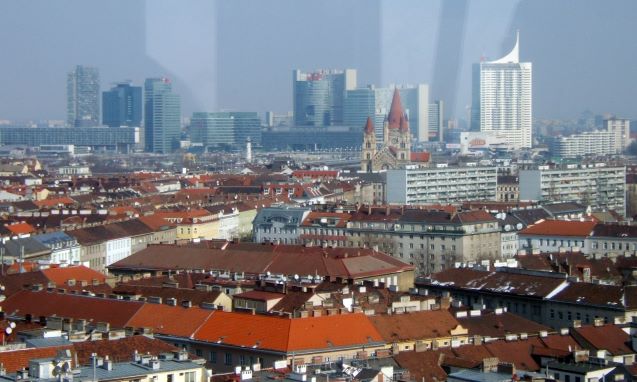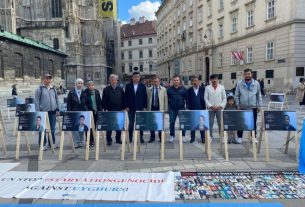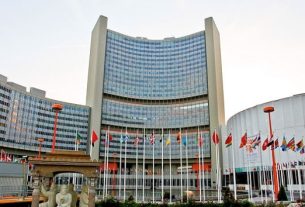Vienna, known as the European capital of social housing, has long been hailed as the poster child for affordable housing initiatives. But could this tradition be on its way out?
More than half of Vienna’s 1.9 million residents live in some form of subsidised housing.
Vienna’s reputation as a beacon of social housing excellence is widely considered well-deserved; the city council owns, co-owns and manages some 50 per cent of the city’s residential real estate through an array of social schemes, these initiatives have made rents affordable for tens of thousands of households.
This decades-old tradition, which began in the 1920s, has contributed to the city’s status as the world’s most liveable city. But is the system as perfect and idyllic as it seems?
Recent developments have raised concerns; critics point to rising rent prices, ever-increasing waiting lists, a diminishing share of social housing in the real estate market after a long period of low-interest rates, and subsequent increases in private property ownership.
Euronews reporter Julian Lopez travelled to Austria’s capital for Euronews Witness to see what’s behind the facade.
A tenant’s paradise
Administrative assistant Tesbire Keskin gave Euronews a tour of her 70 m2 apartment where she has lived with her family for almost 20 years. She pays €500 per month and enjoys a quality of life beyond market standards in her centrally-located flat. “The kindergarten is right opposite me, the school is a ten-minute walk. In two minutes, I’m at the underground,” she explained.
“When my children were small and I couldn’t get home from work, the neighbours picked them up from kindergarten. It’s very nice here; it is green, quiet. I’m very happy, satisfied.”
Representatives from the city council also showed Euronews around some of Vienna’s oldest social buildings. Unlike Berlin and other European cities with high rates of private landownership, the former capital of the vast Austro-Hungarian Empire never sold off its public land.
Vienna’s annual budget for social housing hovers above €400 million, exceeding those of bigger EU capitals like Rome, Madrid or Lisbon.
“Our housing model is secured and financed by a housing tax that every Austrian pays,” said Christian Schantl, the Head of International Relations at Wiener Wohnen-Vienna Living.
“It is a small contribution from their gross income. The employer also makes a small contribution, and this money is specifically intended for housing construction throughout Austria.”
The winds of change
While Vienna is the pioneer of inclusive housing strategies, the city is also grappling with evolving housing dynamics and an increasing demand for social housing in addition, a prolonged period of low interest rates has worked in the favour of private developers.
Experts at the NGO Volkshilfe, which helps homeless people access social housing, argue that decades ago, 80 per cent of new developments were social and 20 per cent private. But now, the tables have turned.
“We used to have two thirds of all apartments built by social housing, ten or fifteen years ago. Now it is the other way around. Two thirds of all apartments are being built by private investors. The result is higher housing prices, of course. We should try to turn it around again,” Martin Orner, the Head of the NGO’s Housing Policy Department, told Euronews.
Due to inflation, the cost of land, materials and maintenance costs have also skyrocketed, putting further pressure on social housing.
“The main solution would be to get more land and more opportunities to build social housing,” suggested Orner.
A century-old tradition
As the city continues to navigate the challenges of a changing real estate landscape, the spirit of ‘Red Vienna’ persists – a period in the 1920s and ’30s when Austria’s Social Democratic Workers’ Party introduced a social housing construction program in response to severe housing shortages.
Today, a permanent exhibition on this era serves as a reminder of the transformative power of social housing in shaping communities and fostering inclusivity. Euronews spoke with the curators, who maintain that this housing model has helped create the city’s unique cultural and social character, which continues to influence the present.
“It was a city within a city and people hardly had to leave their residence because everything was available, including doctors’ surgeries, shops and so on,” explained Lilli Bauer, the exhibition’s co-curator.
“At the time, there were even tuberculosis care centres in those municipal buildings. Similarly, during the pandemic, there were COVID-19 testing and vaccination centres. They were all very decentralised and spread across the city, and easy to access,” she added.
Despite its limitations, Vienna stands as a testament to the enduring impact of progressive housing policies, the city council maintains it will continue to subsidise between 5,000 and 7,000 new flats every year.__Courtesy EuroNews





